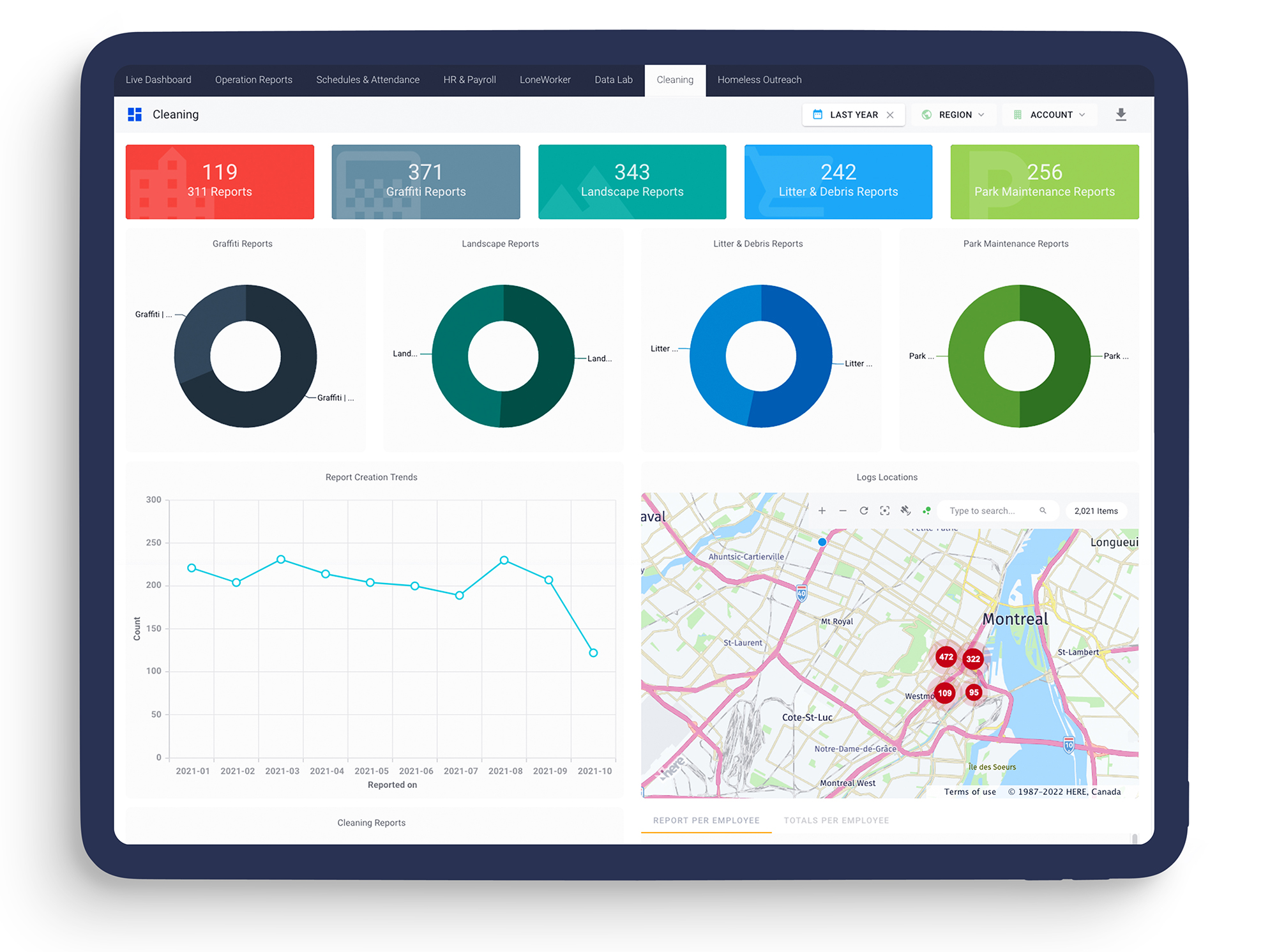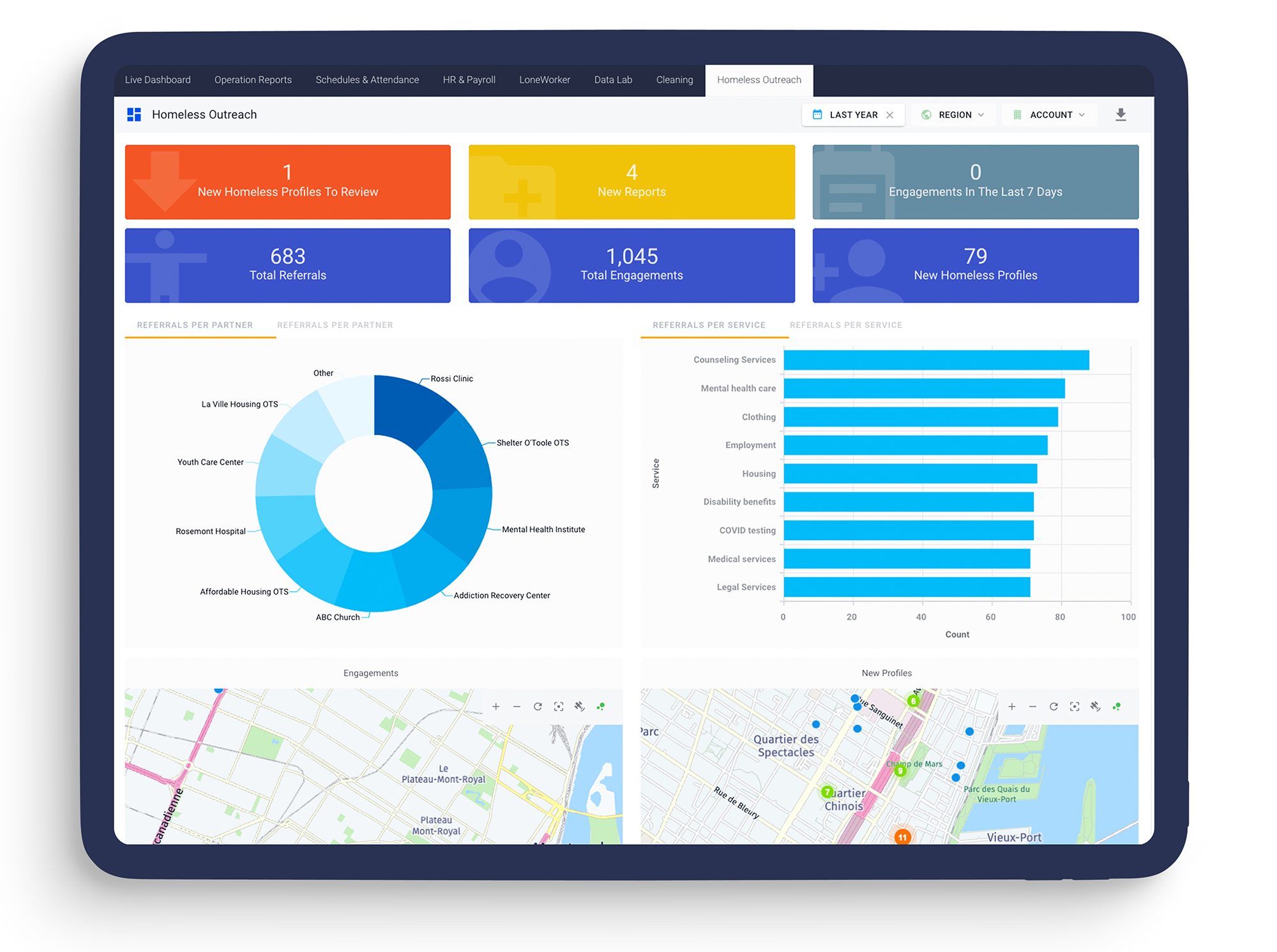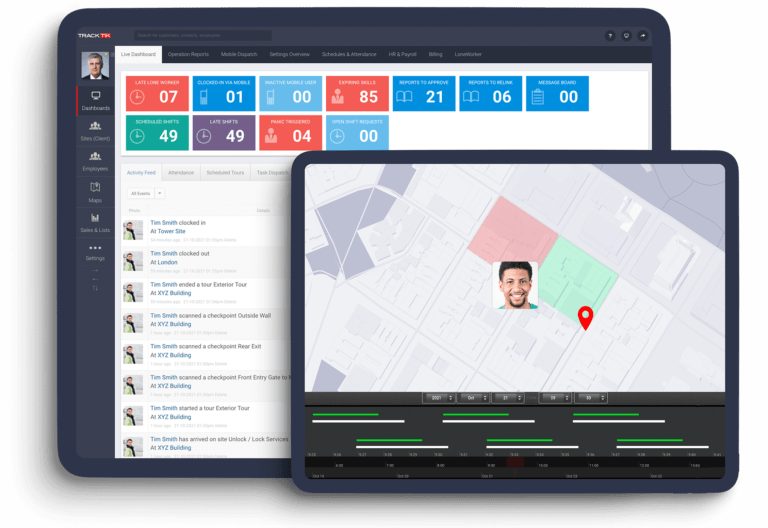The pandemic and ensuing disruptions have affected small businesses and main street enterprises negatively , with many enduring social restrictions. Lack of adequate resources, cash reserves, and steady income streams have given rise to new socio-economic groups in urban centers.
These groups have had to deal with alternative forms of economic challenges, with many on the verge of financial exclusion — and they all live in the heart of your business district.
The temporary desertion of cities and downtown districts only made matters worse. Add to this, a drastic shift to ‘digital living’ meant small business owners and commercial entities of all sizes had to rethink how they did business.
While there seems to be a gradual influx of people back to the city centers, the panic of suburban flight and loss of income streams have forced business districts to default to pre-BID days.
Today, we see more homeless people on the streets, a struggling financial district, offices closed or temporarily shut down, labor shortages, and general disarray of public spaces.
And if the latest McKinsey figures are anything to go by, the mood among respondents is one of cautious optimism, with nearly 40% expressing concerns about the economy in the months ahead.
Now Is The Time to Transform Your BID
But all’s not lost, and as with every cloud, there’s a silver lining here — a good number of respondents believe COVID-19 is no longer a major risk to growth.
The consensus is that downtowns will return; only, they’ll come back in another way — to suit the new normal.
With everything going on, we want to show how you can rejuvenate and transform your BID to succeed in this new normal.
As a BID manager, you have an uphill task of mobilizing operations in this new normal. Your ambassadors too have their work cut out in terms of reviving districts to pre-COVID standards.
However, with the monstrous challenges of the pandemic slowly fading away and local governments providing grants, incentives, resources to rejuvenate BID communities, there is immense scope for you to remodel operations and become sustainable in the long-run.
Now more than ever, there is an opportunity for you to re-engineer service delivery to meet the needs and expectations of your local businesses and community at large — and foolproof your BID against future disruptions.
“If you’re starting again, start off on the right foot — start with technology.”
Technology is an enabler. It creates a soft padding to absorb shocks like COVID-19 without stagnating business and growth.
We’ve seen this during the peak months of the pandemic — those companies that quickly adopted new-age technologies, including the cloud and intelligent automation, could navigate the challenges of the pandemic better, without halting business.
The right technology infrastructure for your improvement districts will go a long way in helping establish a system of continuous BID operations, regardless of disruptions.
Without a suitable mechanism to gain feedback on what is happening on the ground, it is difficult to gauge the effectiveness of your BID programs, find out if your investments are justified, or even make plans for future growth.
You may use the best office automation software, but it is difficult to understand what’s happening in the field without central tracking and reporting software.
There is a gap in automation that prevents you from capturing specific KPIs and understanding the state of your BID.
This gap stops many downtown organizations from mobilizing resources and assigning BID workers to the right projects at the right time.
Technology changes all this.
From Data to Insights to Action
It’s Technology to the Rescue
A suitable cloud-based field service management software like the one offered by TrackTik can help bridge this gap in automation. With TrackTik, you have a central tracking and monitoring station from where you can easily coordinate all field operations.
If delegating tasks to your mobile workforce — your champions and ambassadors — seemed like a challenge during the pandemic, technology, and TrackTik remove these barriers.
“You can supervise and track BID activities and employee engagements in real-time from the comfort of your desk”
TrackTik centralizes all BID operations, allowing you to manage these key jobs from one control center:
- Supervising and managing a mobile workforce
- Knowing first-hand what’s happening in the field
- Ensuring alignment of all BID activities with your mission and vision
- Communicating BID progress, justifying spend, and showing value of completed or pending projects to the board
TrackTik’s field service management app has built-in reporting and trigger capabilities. Your field workers can use the app to report incidents, document all work, or call for reinforcements and dispatch of appropriate personnel.
Bring Your BID Activities to Life with TrackTik’s Dashboards
Visualization is a key feature of TrackTik’s field service management software. Rather than bury your head in countless facts and figures to understand your BID progress, you can view it all on TrackTik’s interactive dashboards.
Dashboards enable diverse data combinations and provide a grid of all employee engagements at the ground level. With options to custom-build widgets and dashboards the way you like, TrackTik helps you take control of your BID and be in charge.
For your convenience, TrackTik provides a few ready-made dashboard templates like Clean Team and Homeless Outreach to get you started on your BID intelligence mapping and analysis.
You can have all your clean reports, ambassador activity, homeless outreach initiatives, and security service reports projected on the screen for a 360° view of everything happening in your BID district.

Empower Your Clean Ambassadors to Do Their Best Work
Where does all the data come from?
TrackTik’s Data Lab
Your BID ambassadors can employ TrackTik’s mobile app to capture and report all fieldwork. The TrackTik software pulls all reporting data from the edges of your BID territory into Data Lab. Data Lab is a repository of your BID activity — you can sort, query, and project data the way you want, and share reports with your BID members.
A Report in Time Saves Nine
As a BID manager or head of operations, you have decisions to make. A visual representation of your improvement district gives you the answers you need to make informed decisions.
Communities and local businesses depend on facilities like sanitation, safety, accessibility, and entertainment to function well. You can facilitate all this with a single field service management solution.
 Plan & Facilitate Timely Homeless Outreach
Plan & Facilitate Timely Homeless Outreach
- Query all TrackTik data
- Build daily activity reports and use ready-made dashboards for monitoring cleaning initiatives, security and safety, ambassador activity, homeless outreach, and more
- Use widgets to measure KPIs like the amount of trash collected, litter and debris count, new homeless profiles, and more
- Refine the results further by applying more attribute filters like ‘time of day’ when trash is cleared
- Get answers to why or why not your BID is functioning as planned
- Click and share your BID progress with the board
- Scale operations to include more remote areas of your BID under your purview and supervision
The need of the hour is to spot trends and patterns in data that will help you steer your BID activities to be more targeted and informed. Data helps you ask better questions and represents how your BID community is doing.
BIDs can only be as strong as the communication channel they share with their members, both on the field and in the boardroom. With TrackTik, your answers to what is happening on the field are just keystrokes away.
There is a natural two-way communication stream that is created, where ambassadors can report back or inform BIDs of the state of affairs on the ground, and receive adequate and timely help.
This two-way communication is a key component of local democracies and ensures your BID stays in compliance with what it set out to do.
By augmenting your BID operations with field service management software, you will enable your mobile workforce to do their best job while getting clarity and insights on how your business district is faring, and the way forward.



